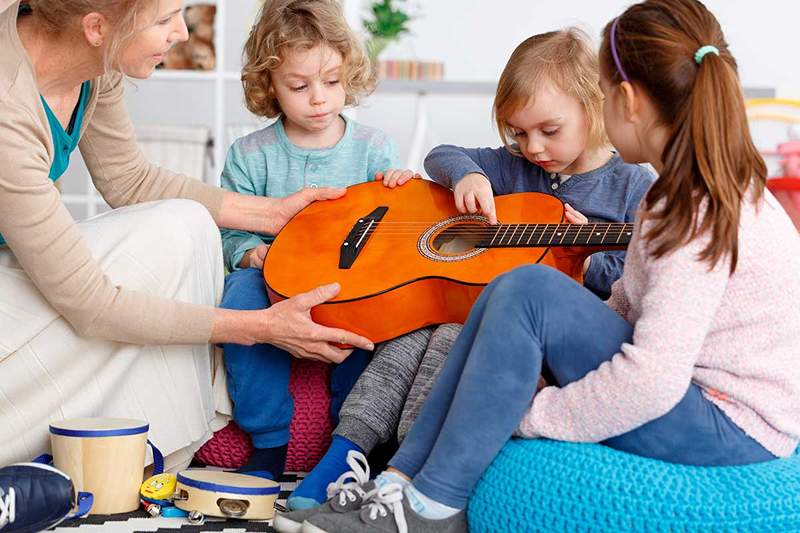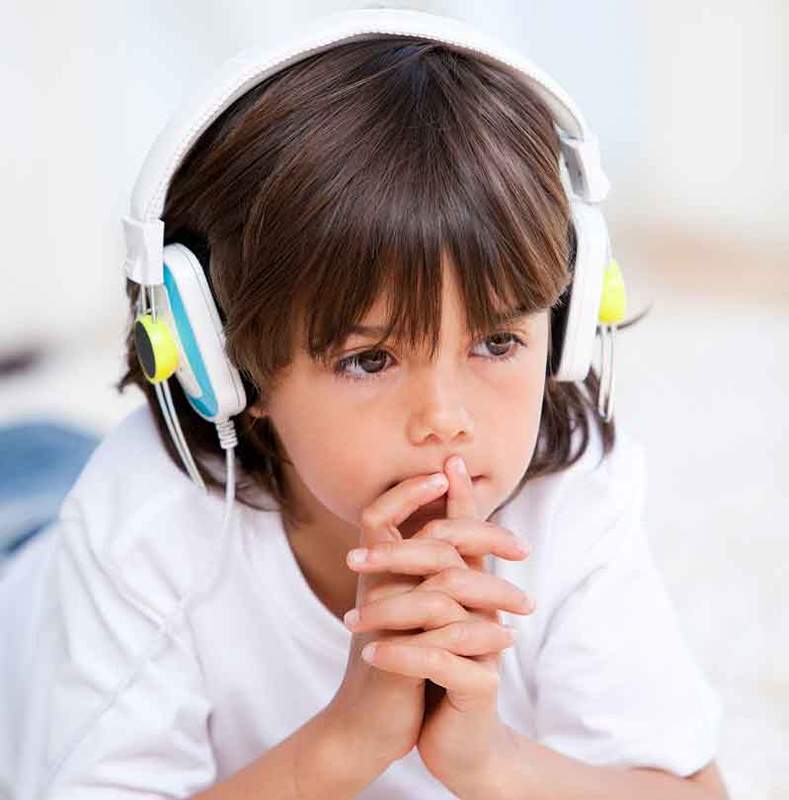Benefits of music therapy in children with autism

- 3493
- 517
- Herbert Ritchie
As an autism specialist professional, he could suggest various feasible treatments to promote significant effects at physical, behavioral and emotional level, but especially one is really interesting, for his proven results.
Musicotherapy is a discipline of the health area, which is used in a dosing way, facilitates positive and significant changes in human behavior. Celed on diverse musical experiences, it uses as specific tools musical instruments or other elements and objects that facilitate and promote the opening of communication channels.
Each session is carefully planned, carried out and evaluated to meet the own and specific needs of each child, since what is useful and healing for a patient may not be for another.
In order to face a treatment with this type of patients, it is important to know that music therapy energizes not only in the purely somatic, motor, sensory, but also, and what is more important, in a wide psychic, cognitive and comprehensive field (Perceptions, emotions, affections, consciousness). Besides Relax in stress, anxiety, the basic anguish existing in this type of pathologies. This relaxation predisposes to concentration, to contact with external reality, self -deficiency, communication. Facilitates sociability and approach with other individuals.
With regard to autism research work, certain studies have shown that music therapy has a positive influence when used in these people.
Content
Toggle- Resources offered by music therapy
- The "computer" rhythm
- The voice
- The game
- Relaxation
- Effects resulting from its application
- Other aspects that music therapy offers
Resources offered by music therapy
The "computer" rhythm
Generally, it is said that an autistic person is arrhythmic by nature. The fact of applying the rhythmic aspect of music to autistic psychology is based on the logical principle of rehabilitation: "We try to compensate the person with those developments that he lacks".
Through insistence and Learning of the respiratory binary rhythm, of the eye rhythm in the flickering, of the rhythm in the dance (dance taken and driven by the therapist), from the two -stroke rhythm when walking by moving the feet, of the binary coordinated rhythm when they alternately go up an arm and another arm, one leg and another leg ... we will get a balanced somatic behavior. The child focuses on a dynamic - motor activity that entertains him and, without realizing he will progressively lead him to an awareness of being a voluntary actor.
The child with autism has its own rhythms, it is not arrhythmic, talking about arrhythmia is talking about absence of. In the case of children with autism we could talk about dysritmia or difficulty adapting to external rhythms, But he swings in a rhythm, he has motor stereotypes in his rhythm, he has the breath in his rhythm and the intakes in his own rhythms that generally do not coincide with those of his family.
The therapist rhythmically perhaps in the autistic body. Executs Synchronized Synchonized Movements using “Tempus” and “Ostinatos” with speed cadences in action. The child feels wrapped, protected, touched. Experience visible sensations of well -being, stimulating and relaxing, and is archiving natural rhythmic behaviors. The perceptual -Cognitive levels are widely widened, as well as the learning of your body scheme.

The voice
It is notorious and experienced that The autistic person pleases the voice more than any other form or sound presentation. From the qualities of sound, the bell plays the most important therapeutic role. The bell of his own voice is the closest and therapeutic instrument available to the musical therapist.
The Use of voice as a dynamic and relaxing element It is a form of direct and warm contact with the autistic. The capacity by the therapist to know how to project, modulate it and regulate it, is a key element for the achievements that are intended. The alterations, intensities, gutturalities, clicks, whores, gorgorites, laughs, cries ... which can emit the voice instrument, encompasses the accumulation of rhythmic possibilities and the qualities of tonal height, intensity, duration and timbre. They value the voice, the word, precisely what he (in many cases) lacks, victim of his speech secrecy.
The tonal heights, next to the intensity (another quality of the sound), place the autistic individual on the border limit between anxiety, nervousness, anguish ... and placidity, serenity and recollection.
The game
During musical therapy a time for the game should be reserved, it may include:
- Specific and personal songs with the name of the child and his family affective environment,
- An orderly and directed improvisation by both the therapist and the individuals who come to the session,
- The story story and its staging.
A Sound Timbric Experimentation (By organ - piano), where the person connects with the keyboard while the therapist changing instrumental records and timbres. In some cases, this contact also serves the child as a psychomotor exercise of digitalization.
Relaxation
In the relaxations (manipulated, free, individual, group), the subject accommodates body consistent with its iso (sound identity). At first it is necessary to be by his side, talk to him, whisper him, combine motor structures with movements and rhythms that are sounding.
If so, we will reach a situation assumed by the daily experience, in which The child relates the moment, music, situation, with relaxation time, And he will assume the horizontal position in the mats simply with listening "and now it is time to relax".
Effects resulting from its application
- Incentives socio -emotional development: In the first steps of some relationship, autistic children tend to ignore or physically reject the social contact attempts offered by those people in the immediate environment. Musicotherapy helps address this pathological behavior by offering a first object relationship with a musical instrument. Far from perceiving the musical instrument as "threatening", many autistic children are usually attracted to the form, sound and perception of the same often officiating of "intermediary object", allowing the threatening experience that the autistic child of an unknown adult perceives (The therapist), can be "channeled or mediated" through them.
- Promotes verbal and nonverbal aspects of communication: When it comes to enriching communication aspects, music therapy tends to increase vocalization and language, and stimulate mental processes such as understanding, conceptualization and symbolic abilities.The music therapist will try, through their multiple strategies, establish a communicative relationship between the child's behavior and the range of their own sound resources. It is interesting that an autistic child has greater ease and openness towards the assimilation of the sound/musical element rather than that of verbal patterns. This special connection with the musical and sound that is observed in autism, encloses the potential necessary to stimulate communication aspects.
- It facilitates through certain instruments an awareness of the body scheme: Another resource that music therapy offers in communication aspects is to include wind instruments in treatment. In many cases, the use of the flute can increase self -perception on areas such as mouth, lips, teeth and tongue, allowing a gradual awareness of the mechanisms that produce speech and organs involved in them.
 Aveyron's wild child
Aveyron's wild child Other aspects that music therapy offers
- Learning guidelines and skills at the social level
- Stimulates the understanding of various aspects of language
- Incentives the desire for communication
- Offers a space for self -expression
- Considerably reduces those stereotyped, non -communicative behaviors
- It helps to reduce the appearance of ecolalic aspects of language
The container frame offered A music therapy session to an autistic individual, promotes the freedom that the child learns to move and act in specific ways that facilitate self -discovery and self -expression.
The fact of making noise, hitting and shaking instruments, shouting and exploring, generate that plus of indispensable pleasure for emotional satisfaction. However, we must always take into account, beyond the multiple positive effects that our discipline exercises on autistic individuals, that treatment must be facilitated by a qualified and trained music therapist in the subject.

